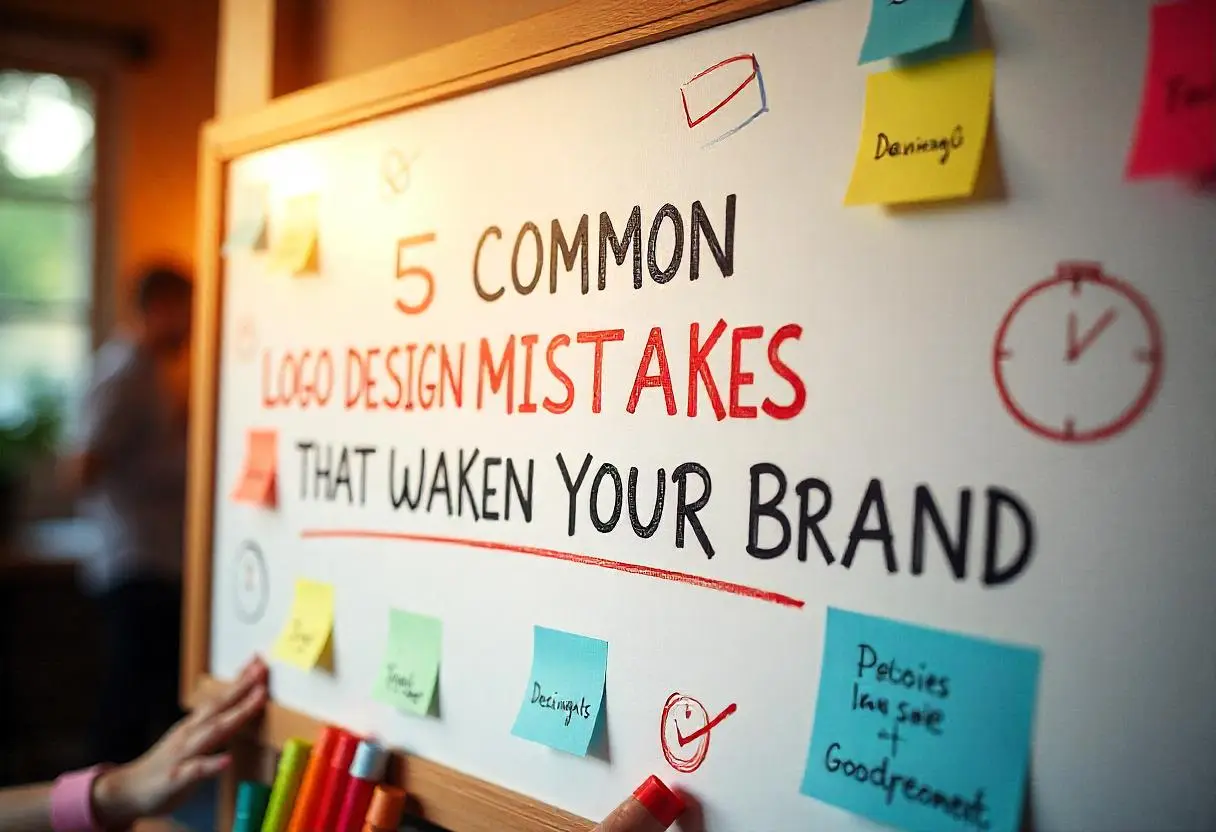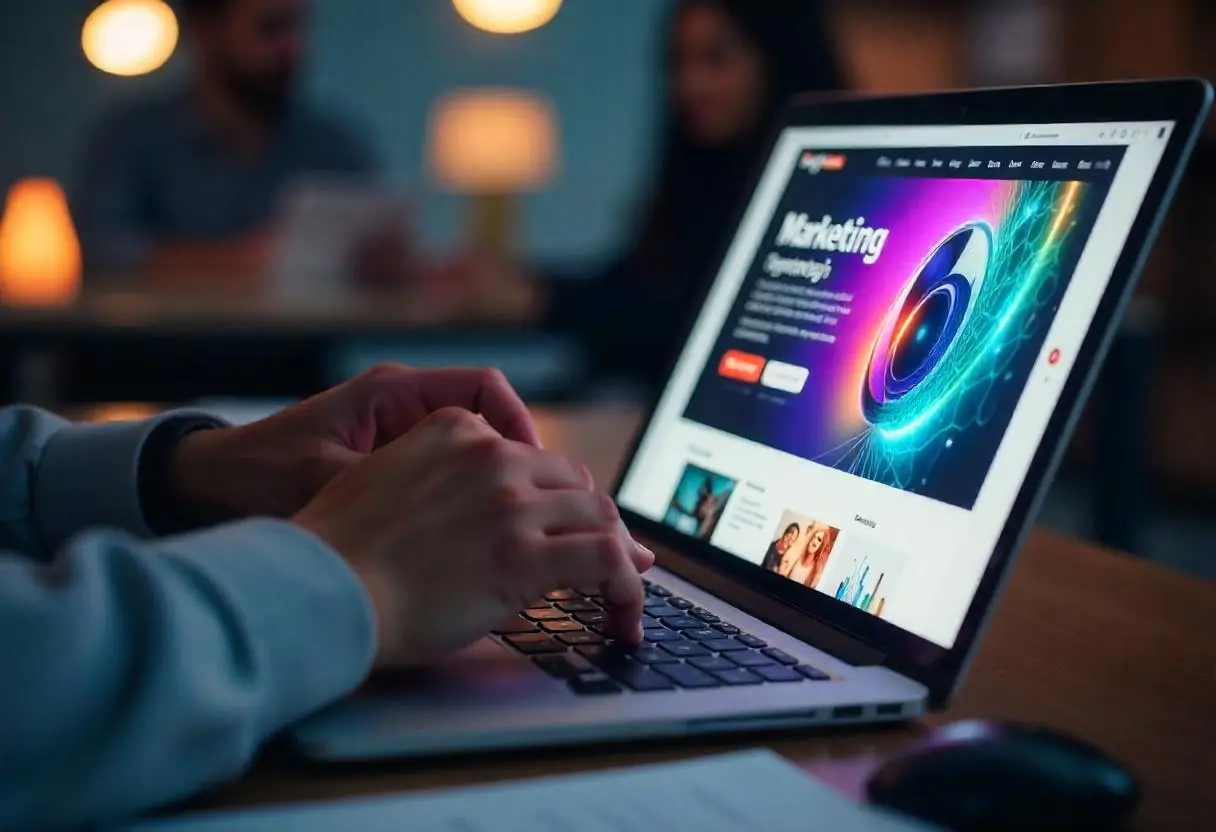Logo design is one of the most crucial steps in building a brand’s visual identity. A professional logo can have a significant impact on attracting customers and establishing trust. However, many businesses make mistakes in the logo design process that not only reduce the brand’s visual appeal but also diminish its credibility and recognition in the market. From choosing inappropriate colors to misusing fonts, common logo design mistakes can easily weaken a brand’s impact.
In this article, we will examine 10 major mistakes in logo design that may weaken your brand. If you want a professional, lasting, and effective logo, it is essential to recognize these mistakes and avoid them. Stay with us to learn key logo design tips and steer clear of common pitfalls in this field.
Lack of Simplicity in Logo Design – Why Is It a Major Mistake?
One of the biggest mistakes in logo design is the lack of simplicity. Many businesses believe that the more complex their logo is, the more professional it appears. However, research has shown that simple logos have a greater impact and are more memorable for audiences.
Complex logos, due to excessive details, diverse colors, and unrelated elements, lose their readability and perform poorly in smaller sizes or on different backgrounds. Meanwhile, successful examples like the logos of Nike, Apple, and McDonald’s demonstrate that simplicity in logo design not only enhances memorability but also gives the brand a strong and unique identity.
Improper Use of Colors in Logo Design – Why Should You Pay More Attention?
Using incorrect colors in logo design is another major mistake. Colors are one of the most powerful tools in graphic design, capable of conveying emotions and specific messages to the audience. Choosing inappropriate colors or weak combinations in logo design can distort your brand’s identity and significantly reduce its impact. For example, using high-contrast colors or mismatched combinations can confuse the audience and make the brand seem less professional.
Colors have an incredible ability to evoke emotions. For instance, red conveys excitement and energy, while blue creates a sense of calm and trust. If you do not use colors correctly and in harmony with your brand’s nature, your brand message may be misinterpreted.
Imitating Other Brands in Logo Design – Why Should You Avoid It?
Another common mistake in logo design is imitating other brands. Many businesses, impressed by the success of major brands, attempt to replicate similar designs. However, this approach can have serious negative consequences. Copying in logo design not only damages your brand’s credibility but also causes your logo to get lost among competitors without any unique visual identity.
While drawing inspiration from major brands can be beneficial, your logo should reflect your brand’s unique characteristics, values, and messages. A distinctive logo ensures that customers can easily recognize and remember your brand.
Examples of brands that have successfully established strong identities with unique logos include Apple, with its simple and minimalist design, and Nike, with its iconic swoosh. These brands demonstrate how creative and unique design can create a powerful and lasting brand identity.
Mismatched Fonts in Logo Design – Why Can This Weaken Your Brand?
Choosing a font that does not match the brand’s nature is another critical mistake in logo design. Typography plays a key role in a logo, and the selected font should align perfectly with the brand’s identity. Using inappropriate fonts can miscommunicate your brand’s message and even reduce its credibility.
For instance, using heavy and complex fonts for a brand aiming to convey youthfulness and vibrancy can confuse audiences and create a negative impression. Conversely, using simple and playful fonts for luxury and professional brands can make them appear weak and unimportant.
In logo design, fonts should be chosen carefully to align with the brand’s personality. Brands that have successfully utilized appropriate typography clearly reflect their identity. For example, Coca-Cola’s unique and curvy font conveys warmth and friendliness, while Google’s simple and modern typeface represents accessibility and ease of use.
Overuse of Details and Effects in Logo Design – Why Should You Avoid It?
Excessive use of details and effects in logo design is another mistake to avoid. While adding attractive effects or intricate details might seem like a way to make a logo stand out, these elements can actually clutter the design and reduce its effectiveness. A logo should be simple, clear, and recognizable in different sizes.
Overuse of details, especially in logos that will be printed or displayed in small sizes, can reduce clarity and readability. Additionally, extra effects such as shadows, gradients, or embossing may make a logo appear outdated over time.
Conclusion
In logo design, every detail must be carefully considered, as a logo serves as the primary symbol of a brand’s identity, significantly influencing recognition and customer trust. Common mistakes like lack of simplicity, improper use of colors, copying other brands, font mismatches, and excessive detailing can harm your brand and prevent it from standing out.
By following practical and fundamental design principles, such as choosing appropriate colors, using fonts that match the brand’s essence, and avoiding unnecessary complexities, you can create a powerful, memorable, and unique logo. Leading brands have demonstrated that simplicity and originality are the keys to success in logo design.
If you would like a professionally designed logo that meets standards, Digi Web’s graphic design services are available to help. You can submit your request through this link or contact us via the “Contact Us“ section to place your order.







4 Comments
Join the discussion and tell us your opinion.
Thanks this article was very good
I’m glad it was useful for you
Many thanks digiweb team
You’re welcome John